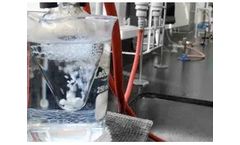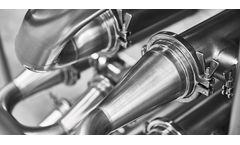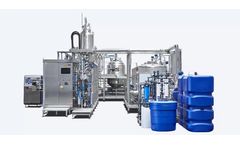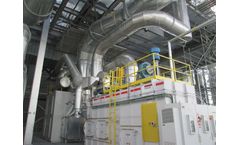Refine by
Heat Exchanger Design Articles & Analysis
28 articles found
In the chemical industry, precise temperature control is crucial to ensuring efficient, safe, and cost-effective operations. Chemical processes often require heat to be transferred between substances in ways that prevent thermal damage, promote chemical reactions, and maintain safety standards. Shell and tube heat exchangers (STHEs) are widely used in these applications, offering efficient heat ...
Heat exchangers are commonly used for a wide range of purposes in the anaerobic and biogas sector, from digester heating and pasteurisation to evaporation, biogas dehumidification and exhaust gas heat recovery. With a wide range of types and designs available from numerous manufacturers, choosing the right ...
All but the most basic heat exchangers are created to a bespoke brief, designed to take into account the material/s being heated or cooled, the heating or cooling medium, the amount of product being processed, product velocity, risk of fouling and a host of other factors. ...
HRS is well known as a leading supplier of heat exchange, but our clients are increasingly looking for turnkey solutions for their thermal processing challenges. ...
A heat exchanger is a device that transfers (or exchanges) heat from one fluid to another. There are many different names for heat exchangers because of their varied applications. When considering what you want from a heat exchanger you should think about which ...
Shell and tube heat exchangers are used for the flow of in-line heating and cooling. ...
Retain more process fluids, save time and budget on maintenance, increase heat transfer efficiency by up to 50%, and integrate into your existing system, or upgrade to a new skid-mounted heater exchange ...
AHED (Advanced Heat Exchanger Design) is a powerful design tool for the calculation of one of the most used items of process equipment: shell and tube and heat exchangers (STHE’s). STHE’s are used in widespread process industries including Chemical, Oil & Gas, Wastewater, Food, ...
Heat exchangers are crucial to many processes in the water industry, in aerobic or anaerobic digestion plant, for cooling or evaporation, and for sludge concentration. Choosing the right heat exchanger can appear daunting, and maximising productivity is ...
Operators of anaerobic digestion (AD) plants know how important it is to optimise energy use across all stages of the process. That is why many recapture as much heat as possible for reuse elsewhere, including from the hot exhaust gases generated by the combined heat and power (CHP) engines which turn the biogas from the AD plant into useful heat and electricity. Heat exchangers used for exhaust ...
With 40 years’ experience as a company, our engineers and sales staff have encountered a wide range of issues on sites. Here are ten of the most common mistakes that can occur as a result of poorly-specified or badly-installed heat exchanger systems – and how you can avoid ...
We're continually inspired and excited by new innovations; in fact, we're always pursuing new applications and uses for our products and find that the rise of emerging industries like green technology holds limitless possibilities for innovators. Our work with fluoropolymers, which are known for their unique properties and exceptional versatility, makes us well-positioned to embrace new ...
Ensuring product safety is the number one priority for any producer of pharmaceutical products, and a key aspect of this is avoiding contamination during production. Design and construction plays a key role in achieving this, and the heat exchangers used for processes such as pasteurisation and sterilisation are no exception. There are three ...
HRS Heat Exchangers’ Cameron Creech, General Manager for HRS North America, explains why the HRS R Series is a better option than traditional single tube scraped surface heat exchangers. The R Series Scraped Surface Heat Exchangers have been designed to maximise energy and ...
When operating in exceptionally challenging conditions, or handling difficult materials such as sewage and wastewater sludges, even the best designed heat exchangers will be susceptible to fouling. Understanding the different types of fouling and what causes them will help engineers and operators pick the best type of heat ...
The Challenge Twisted tube designed heat exchangers are exceptionally difficult to clean. This particular fouling process is extra challenging due to the steam in the tube side which bakes the bitumen on to the shell side faster than other designs. This heat exchagner was brought to ABSOLUTE after a previous ...
The second step was for Anguil engineers to select and design the proper oxidizer technology to pair with the new concentrator wheel. ...
This installation was Glosfume's first use of a new process designed to incorporate an innovative 'radiant heating tube' which allows fumes to cool prior to filter without the need for dilution air and/or a heat exchanger. This design has subsequently been successfully utilised on several similar rotary ...
ByGlosfume
In a heat exchanger, the amount of heat that is transferred at relatively high temperature is of greater importance than heat balance. ...
A regional wastewater treatment plant in Sonoma County was experiencing problems with struvite on their screw presses and vivianite on their heat exchangers. The design plant flow rate is 7.9 mg/day. They were using 7 mg/L to 10 mg/L (dry basis) of ferric chloride to control hydrogen sulfide and improve solids removal in the primary clarifier. ...












